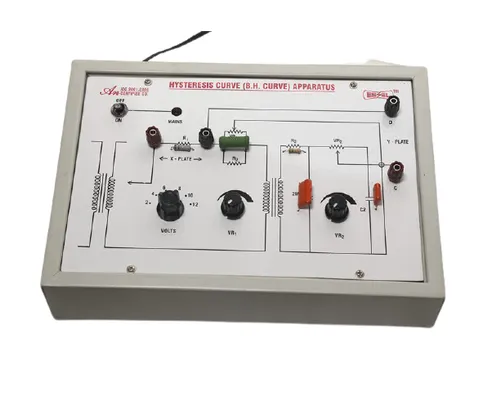Components of the B-H Curve Apparatus
- Magnetizing Coil (Primary Coil) – Produces the magnetic field (H) when current flows through it
- Search Coil (Secondary Coil) – Measures the induced magnetic flux (B) in the specimen.
- Ferromagnetic Specimen (Core Material) – The test material (iron, steel, ferrite, etc.).
- AC Power Supply – Provides an alternating magnetic field.
- Current Sensor (for H measurement) – Measures magnetizing current to determine H.
- Voltage Sensor (for B measurement) – Measures induced EMF in the search coil to determine B.
- CRO (Cathode Ray Oscilloscope) or Digital Display – Plots the B-H curve.
Interpretation of the B-H Curve
The hysteresis loop (B-H curve) provides critical insights into the material’s magnetic behavior:
| Parameter | Description |
|---|---|
| Retentivity (Br) | The remaining magnetization after the external field is removed. |
| Coercivity (Hc) | The reverse field needed to bring the magnetization to zero. |
| Saturation (Bs) | The maximum magnetization achievable in the material. |
| Hysteresis Loss | The energy lost per cycle due to magnetization reversal. |
| Permeability (μ) | The material’s ability to allow magnetic flux. |
Applications
- Material Testing – Used to analyze magnetic properties of different materials.
- Transformer and Core Design – Helps in selecting materials for low-energy loss cores.
- Magnetic Memory & Data Storage – Used in studies of hard disk materials.
- Magnetic Sensors & Electromagnetic Devices – Characterizes materials used in sensors and actuators.



There are no reviews yet.